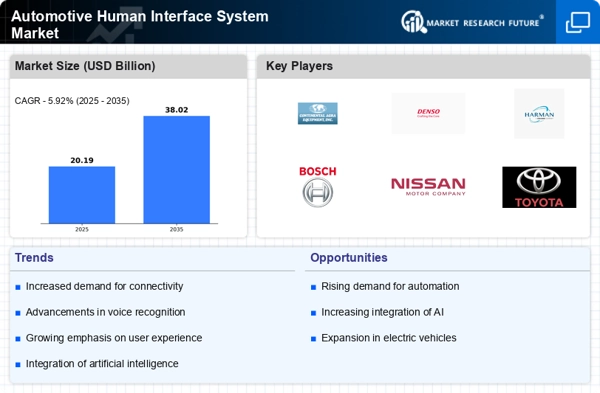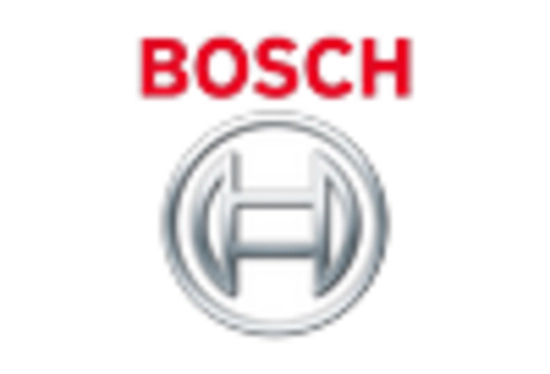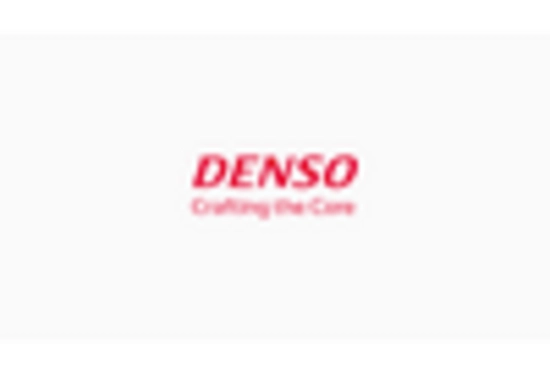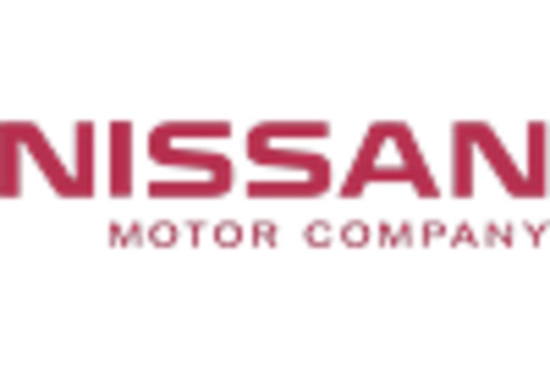Focus on Safety and Compliance
Safety remains a paramount concern in the Automotive Human Interface System Market, prompting manufacturers to prioritize compliance with stringent regulations. Governments worldwide are implementing regulations that mandate advanced safety features in vehicles, such as collision avoidance systems and driver monitoring technologies. This focus on safety not only enhances consumer trust but also drives innovation in interface design. For example, systems that monitor driver alertness and provide real-time feedback are becoming increasingly prevalent. The market is expected to witness a significant uptick as manufacturers invest in developing interfaces that meet these regulatory requirements, potentially increasing market value by 15% in the coming years.
Consumer Demand for Personalization
Consumer preferences are evolving, with a growing demand for personalized experiences in the Automotive Human Interface System Market. Modern drivers seek interfaces that can adapt to their individual preferences, from customizable dashboard layouts to tailored infotainment options. This trend is prompting manufacturers to invest in user-centric designs that enhance the overall driving experience. Personalization not only improves user satisfaction but also fosters brand loyalty, as consumers are more likely to choose vehicles that offer tailored features. Market Research Future indicates that the personalization segment could account for over 25% of the total automotive interface market by 2026, reflecting the increasing importance of user experience in vehicle design.
Integration of Advanced Technologies
The Automotive Human Interface System Market is experiencing a notable surge due to the integration of advanced technologies such as artificial intelligence, machine learning, and augmented reality. These technologies enhance user experience by providing intuitive interfaces that facilitate seamless interaction between drivers and vehicles. For instance, AI-driven voice recognition systems allow for hands-free operation, thereby improving safety and convenience. Furthermore, the incorporation of augmented reality in head-up displays offers real-time information, which is crucial for navigation and vehicle diagnostics. As a result, the market is projected to grow at a compound annual growth rate of approximately 10% over the next five years, driven by consumer demand for smarter, more connected vehicles.
Rise of Connectivity and IoT Integration
The rise of connectivity and Internet of Things (IoT) integration is a driving force in the Automotive Human Interface System Market. As vehicles become more connected, the demand for interfaces that facilitate communication between the vehicle and external devices is escalating. This connectivity allows for features such as remote vehicle monitoring, over-the-air updates, and integration with smart home systems. The proliferation of 5G technology is further enhancing these capabilities, enabling faster data transmission and improved user experiences. Analysts estimate that the connectivity segment of the automotive interface market could grow by 20% annually, as consumers increasingly expect their vehicles to be part of a broader connected ecosystem.
Shift Towards Electric and Autonomous Vehicles
The transition towards electric and autonomous vehicles is reshaping the Automotive Human Interface System Market. As more manufacturers pivot to electric vehicle production, the demand for sophisticated human interface systems that cater to unique user needs is rising. Autonomous vehicles, in particular, require advanced interfaces that can communicate complex information to users, such as system status and navigation updates. This shift is likely to create new opportunities for interface developers, as they design systems that enhance user engagement and trust in autonomous technology. Analysts predict that the market for automotive human interfaces will expand significantly, potentially doubling in size by 2030, driven by the proliferation of electric and autonomous vehicles.

















Leave a Comment